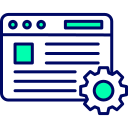Community, Feedback, and Continuous Refinement
End posts with specific questions: Which interface metaphor resonates with you? Where did our rationale feel thin? Purposeful prompts draw better comments. Feature thoughtful replies in your newsletter to reward participation and demonstrate that your voice listens as much as it speaks.
Community, Feedback, and Continuous Refinement
Track time on page, scroll depth, and click maps, but translate numbers into editorial decisions, not clickbait. If readers linger on process sections, expand that series. Share your quarterly learnings and ask subscribers which experiments you should run next to refine tone with integrity.




